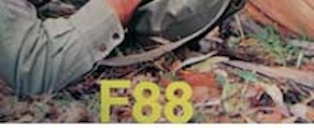
Martini-Enfield rifles were, by and large, conversions of the Zulu War era .450/577 Martini-Henry, rechambering the rifle for use with the newly introduced .303 British cartridge. Whilst most Martini-Enfields were converted rifles, a number were newly manufactured as well.
The Martini-Enfield Mk I was effectively a Martini-Henry Mk III rebarrelled to .303 and with a new extractor installed, whilst the Martini-Enfield Mk II rifles were generally of new manufacture- although there are examples of converted Mk II rifles.
Originally (from 1889) Martini-Henry conversions used Metford rifled barrels (and were known as Martini-Metford rifles), which were more than suitable for the first .303 cartridges, which used black powder as a propellant, but they wore out very quickly when fired with cordite/nitrocellulose cartridges (introduced in 1895) and so in 1895 the Enfield rifled barrel was introduced, which was much more satisfactory and suitable for use with "modern" (smokeless) ammunition.
The Martini-Enfield was in service from 1895-1918 (Lawrence of Arabia's Arab Irregulars were known to have used them during the Arab Revolt of 1916-1918, along with any other firearms they could acquire), and it remained a Reserve Arm in places like India and New Zealand until well into World War II.

Martini-Enfield rifles were manufactured/converted by:
* RSAF (Royal Small Arms Factory), Enfield Lock
* LSA Co (London Small Arms Co)
* BSA & M Co (Birmingham Small Arms & Metals Co, later simply BSA)
* HRB Co (Henry Rifle Barrel Co, later went out of business and taken over by Blenheim Engineering)
* NA&A Co (National Arms & Ammunition Co)
Martini-Enfield rifles were very well made and are more than capable of handling modern commercial .303 British ammunition- but as with all second hand firearms, they should always be checked by a competent gunsmith before attempting to fire them.
Khyber Pass Copies
The Khyber Pass region between Pakistan and Afghanistan has long had a reputation for producing unlicensed, home-made copies of firearms using whatever materials are available- more often than not, railway sleepers, junked motor vehicles, and scrap metal.
During the various British military expeditions in the North-West Frontier, the locals acquired examples of the Martini-Henry, Martini-Enfield, and later, Lee-Enfield rifles and began to make their own copies.
The quality on such rifles varies from "As good as a factory-produced example" to "dangerously unsafe", tending towards the latter end of the scale.
UNDER NO CIRCUMSTANCES SHOULD A KHYBER PASS COPY RIFLE BE FIRED USING COMMERCIAL AMMUNITION.
The ammunition used in the region is often underloaded, being made from a variety of powders -or even old film (which contains nitrocellulose, a key component of smokeless powder). As such, Khyber Pass Copy rifles cannot generally stand up to the pressures generated by modern commercial ammunition, and it is generally advised that they not be fired under any circumstances, although there are a few collectors out there who have made extremely mild handloaded cartridges for their Khyber Pass rifles. This practice is NOT recommended, and anyone firing a Khyber Pass rifle is doing so at their own risk.
Khyber Pass Copies can be recognised by a number of factors, notably:
* Spelling errors in the markings (the most common of which is a backwards "N" in "Enfield")
* V.R. (Victoria Regina) cyphers dated after 1901- Queen Victoria died in 1901, so any rifles made after this should be stamped "E.R" (Edward Rex, referring to King Edward VII)
* Generally inferior workmanship, including weak/soft metal, poorly finished wood, and badly struck markings.
There has been surprisingly little interest in the Khyber Pass varieties of rifle in the Military Surplus collecting community, which is odd given that many of the Khyber Pass rifles are richly decorated and make excellent "wall-hangers" or conversation pieces. A number have recently been imported into the US by returning soldiers and some of the larger Arms Wholesalers, so interest in them may grow in the future.





